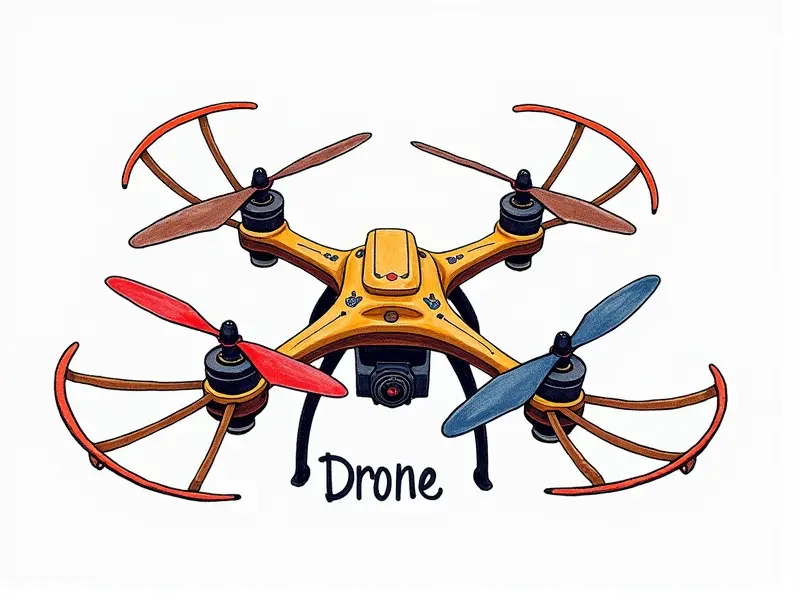RC plane control surfaces

Mastering RC Plane Control Surfaces
Remote-controlled (RC) planes are a popular hobby for enthusiasts of all skill levels. Understanding the various control surfaces is crucial to achieving optimal flight performance and stability. This article delves into the intricacies of each component, providing valuable insights on how to adjust and fine-tune them.
Understanding Ailerons in RC Planes
Ailerons are pivotal for controlling roll, enabling the plane to bank left or right during turns. They are typically located near the wingtips and work in opposite directions: when one aileron deflects upward, the other deflects downward.
- Function: Ailerons control lateral movement by creating differential lift on each wing.
- Adjustment: Properly setting up your ailerons involves ensuring they are symmetrical and aligned with the wings. Use your transmitter's fine-tuning features to achieve precise roll response.
RC Plane Elevator Basics Explained
The elevator is responsible for controlling pitch, allowing the plane to ascend or descend. Located at the tail of the fuselage, it works in conjunction with other control surfaces to maintain stability and maneuverability.
- Function: The elevator controls the angle of attack by raising or lowering the nose of the aircraft.
- Tuning Tips: Adjusting the elevator trim can help reduce stick pressure and improve overall control. Ensure that your elevator is properly balanced to avoid excessive forces during flight.
How to Adjust RC Plane Rudder
The rudder influences yaw, enabling the plane to turn left or right around its vertical axis. Properly setting up the rudder is essential for coordinated turns and maintaining straight-line stability.
- Function: The rudder works in conjunction with ailerons to control directional movement and prevent skidding during turns.
- Tuning Tips: Fine-tune your rudder's sensitivity to achieve smooth, responsive yaw control. Ensure that the rudder is properly aligned with the fuselage to avoid misalignment issues.
RC Plane Flaps: What You Need to Know
Flaps are crucial for improving lift and reducing stall speed during takeoff and landing phases. They extend downward from the trailing edge of the wing, altering its aerodynamic profile.
- Function: Flaps increase lift by changing the camber of the wing, allowing slower approach speeds and steeper descent angles.
- Tuning Tips: Adjust your flap settings based on the specific needs of your aircraft. Ensure that flaps deploy smoothly and retract without causing drag or instability.
Tips for Tuning RC Plane Surfaces
Fine-tuning control surfaces is a critical aspect of optimizing flight performance. Here are some general tips to help you achieve the best results:
- Calibrate Your Transmitter: Ensure that your transmitter's settings accurately reflect the movements of each control surface.
- Test in Small Increments: Make small adjustments and test them thoroughly before making further changes.
- Consider Environmental Factors: Wind, temperature, and humidity can affect how your plane responds to control inputs. Adjust settings accordingly for optimal performance.
Essential Guide to RC Wing Dihedral
Dihedral is the upward angle of the wings relative to the horizontal plane. It plays a significant role in maintaining lateral stability and preventing roll instability during flight.
- Function: A positive dihedral angle helps counteract adverse yaw, improving directional stability and reducing the need for constant rudder input.
- Tuning Tips: Adjusting dihedral can be done by modifying wing angles or adding auxiliary structures. Ensure that your adjustments do not compromise structural integrity or aerodynamics.
Tailplane Setup for RC Planes
The tailplane, including the elevator and rudder, is crucial for pitch and yaw control. Proper setup ensures stability and responsiveness during flight operations.
- Function: The tailplane works in tandem with other control surfaces to maintain balance and maneuverability.
- Tuning Tips: Ensure that the elevator and rudder are properly aligned and balanced. Adjust trim settings as needed for smooth, predictable flight characteristics.
Fine-Tuning RC Trim Settings
Trim settings allow you to compensate for inherent aerodynamic imbalances in your plane, ensuring stable and controlled flight without constant input from the transmitter.
- Tailwheel vs. Tricycle Gear: Different landing gear configurations may require different trim adjustments to achieve optimal stability.
- Adjusting for Wind Conditions: Tailwind or headwind conditions can affect how your plane responds, necessitating fine-tuning of trim settings.
Common Issues with RC Control Surfaces
Misalignment and improper adjustment are common problems that can significantly impact flight performance. Here’s a quick guide to troubleshooting these issues:
- Misaligned Ailerons: Check for symmetry and ensure proper alignment with the wings.
- Inconsistent Elevator Response: Verify that your elevator is properly balanced and free of obstruction.
- Rudder Binding or Misalignment: Inspect rudder movement and adjust as necessary to prevent binding or misalignment.
Optimizing RC Plane Stability
Achieving optimal stability involves a combination of proper control surface setup, trim adjustments, and environmental considerations. Here are some strategies to enhance overall flight performance:
- Balanced Wing Design: Ensure that your wing design promotes balanced lift distribution across the span.
- Aerodynamic Efficiency: Optimize your plane's aerodynamics by minimizing drag and maximizing lift-to-drag ratio.
- Regular Maintenance: Keep your control surfaces in good condition through regular inspection and maintenance.
Conclusion
Mastery of RC plane control surfaces is essential for achieving optimal flight performance and stability. By understanding the functions, adjustments, and tuning tips provided in this guide, you can enhance your flying experience and enjoy smoother, more controlled flights. Regular practice and attention to detail will help you fine-tune your setup and overcome common issues, ensuring that every flight is a success.

